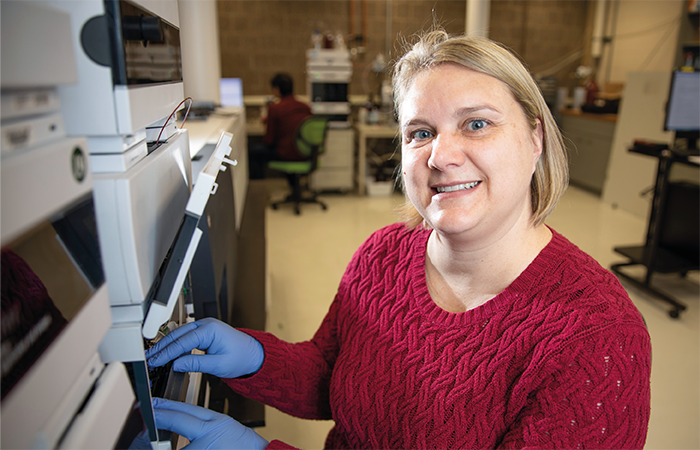Niemann-Pick Type C (NPC) is a rare progressive genetic disorder characterized by the body’s inability to transport cholesterol and other lipids inside cells – and there is still very little that we know about the disease. The impact of NPC ranges from fatalities in the neonatal period to chronic progressive disorders well into adulthood.
Here, we speak with Stephanie Cologna, Associate Professor of Chemistry and Associate Vice Chancellor for Research at the University of Illinois Chicago, who is pushing the research agenda to improve the quality of life for patients with NPC.

Credit: Supplied by Interviewee
What inspired your focus on this neurodegenerative disorder and what are you hoping to achieve with your research?
After my doctoral and postdoctoral training, I was excited to build my own research group leveraging analytical technologies to study neurodegenerative disorders. As a postdoctoral fellow, I worked on NPC and I was struck by the devastating disorder and lack of any intervention. I hope our research will contribute to the development of intervention where those afflicted with NPC can live long and fulfilling lives.
At Pittcon 2024, you shared results from a 2020 study; could you please provide a brief summary?
The study in question involved looking at brain lipid distributions in a mouse model of NPC – specifically the cerebellum, which is affected in NPC with progressive neuronal loss (1). By applying mass spectrometry (MS) imaging analysis, we observed changes in the white matter of some lipids. NPC has a dysmyelination phenotype, which intrigued us as we explored its contributing factors.
We found that bioactive lipids, specifically phosphoinositides, are altered in NPC mouse models. This was initially observed in our MS imaging studies and confirmed by LC-MS lipidomics and proteomics. Perhaps not surprising, but it was certainly interesting that this discovery led us to consider myelin defects in NPC, allowing us to combine lipid and protein data for a better understanding of alterations in the disease model.
Why is MS so important in these studies?
Our laboratory uses MS everyday! MS is growing in the clinical setting and we believe it’s an indispensable tool in our work – especially in biomarker discovery. Of course, there are instances where other technologies are better suited for specific measurements, but MS provides unique capabilities in clinical research that may not be possible with other strategies.
From a discovery perspective, multi-omics can be incredibly informative when studying a disease, particularly heterogeneous ones like NPC. As mentioned above, our lab uses MS to investigate various biomolecules, with lipids being a key area for clinical research.
A major challenge lies in transitioning from discovery to validation of candidate markers, which requires significant investment and precious, often limited samples, especially in rare diseases. However, as with all challenges presented in research, it's most important to keep committed, curious, and excited about the work you’re doing.

At Pittcon, you also discussed a study of fatty acids altering tissue – could you tell us more about this in relation to proteomics and diagnostic research?
We’ve been exploring alterations of fatty acids in the brain of NPC mouse models for a few years – initiated by a study in the liver tissue from NPC mice (2). We’re interested in understanding fatty acids and changes associated with the cholesterol storage aspect of NPC disease. Complementary to our fatty acid studies, we also perform proteomics analysis and regularly monitor proteins related to fatty acid homeostasis in NPC models. Outside of our research, other labs have developed blood spot-based screens, which, alongside genetic testing, are promising in developing diagnostics for NPC.
What else is your research group working on?
The majority of our work is based around NPC research. In addition to our global proteomics and lipidomics research, my lab has been working on developing assays for monitoring biomarkers in cerebrospinal fluid. We’re also continuing to work on basic biology of NPC in an attempt to identify candidate targets for therapeutic development.
References
- KC Pathmasiri et al., J Lipid Res, 61, 7 (2020). PMID: 32371566.
- MR Pergande et al., Proteomics (2019). PMID: 31394590.




